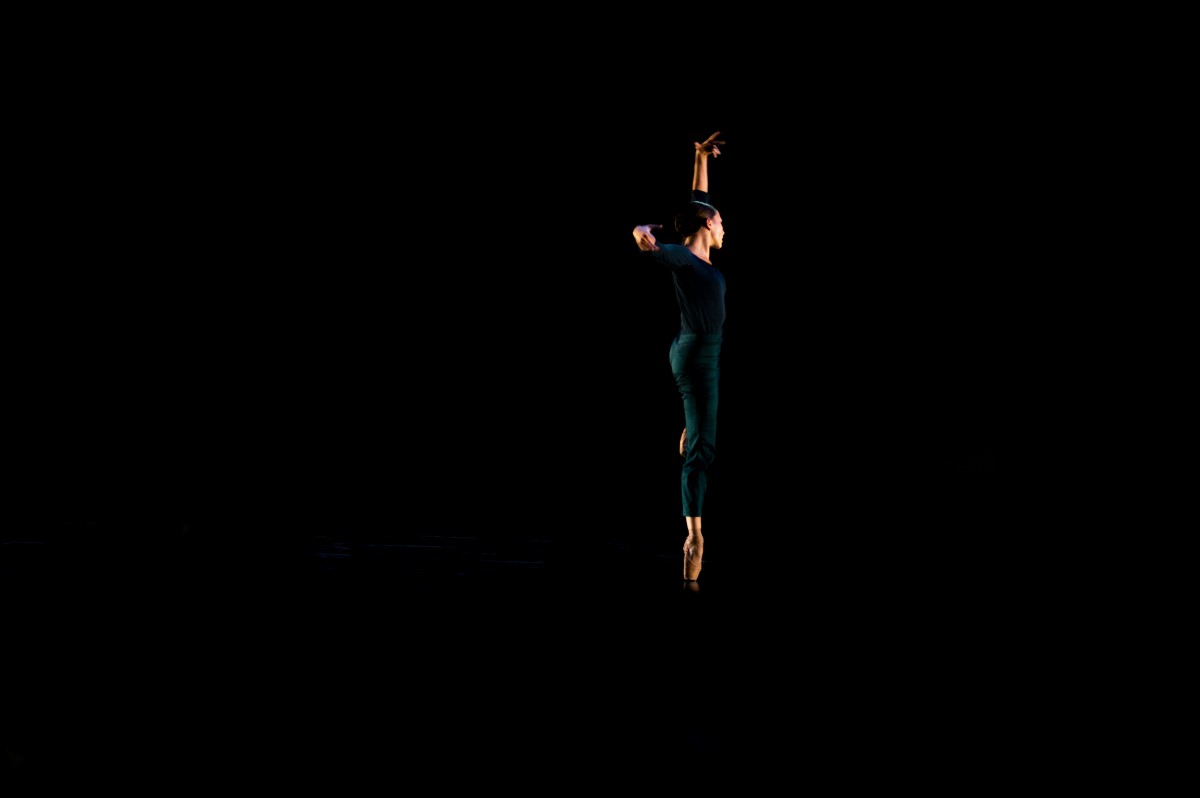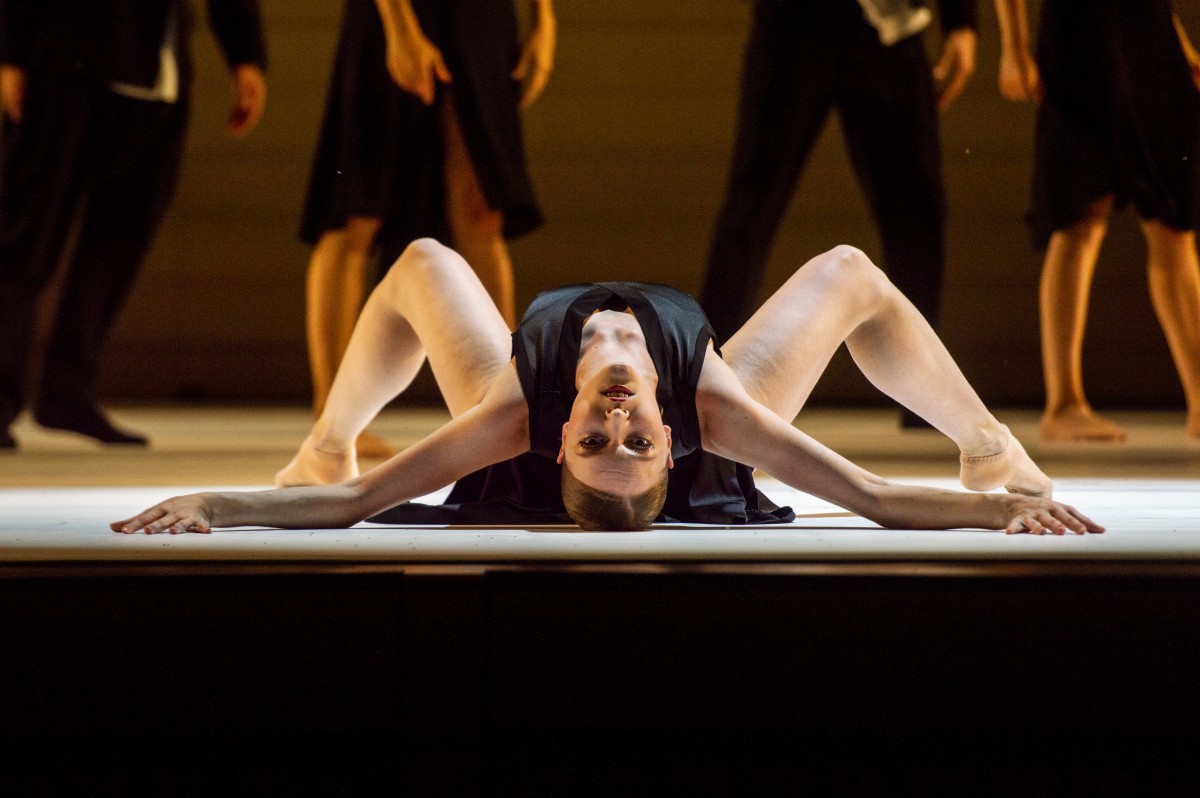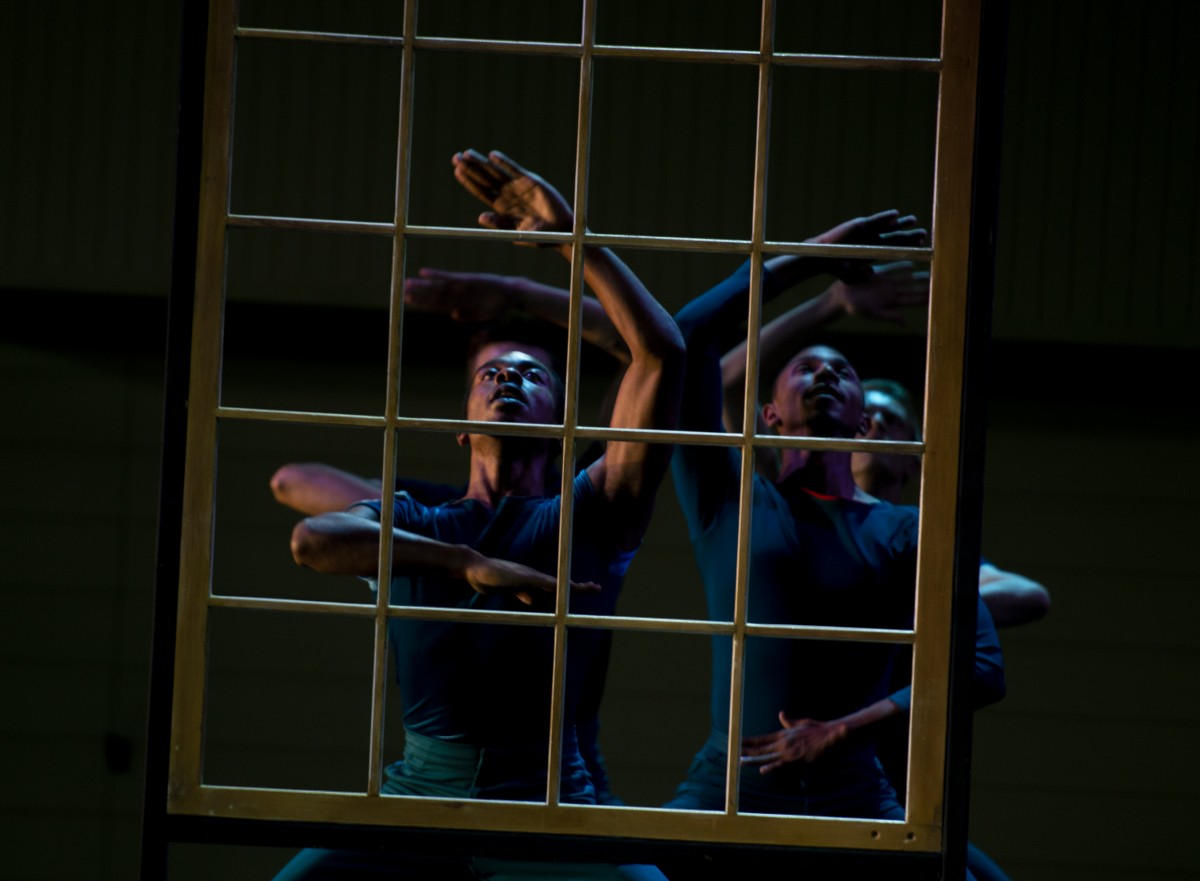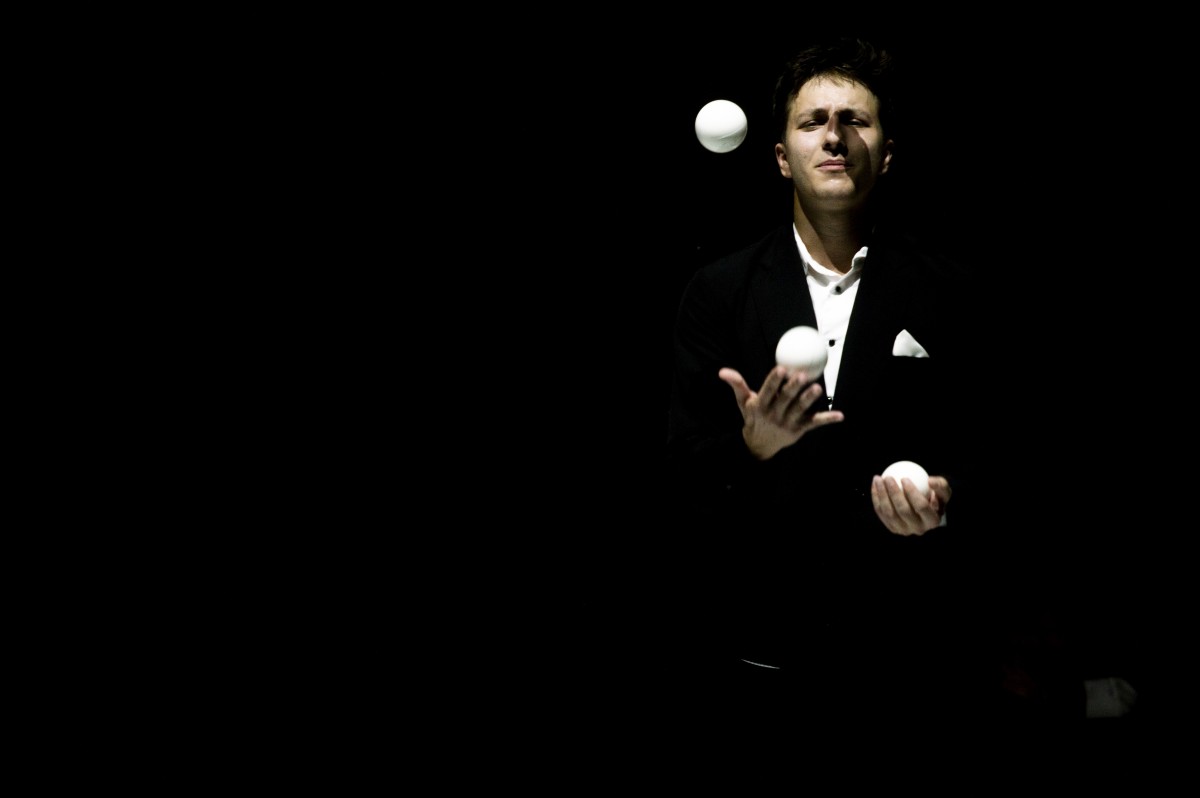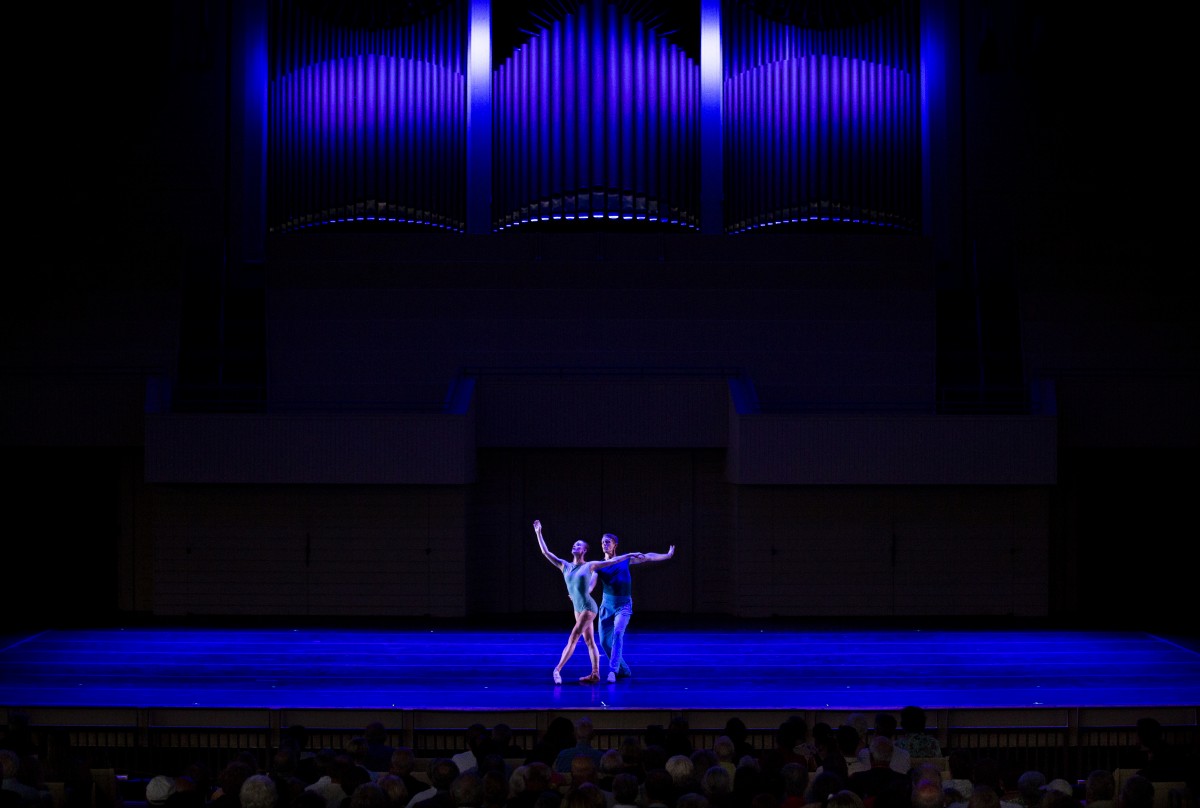Review by Steve Sucato:
Chautauqua mainstay Charlotte Ballet returned to the Amphitheater Wednesday night for the first of its two productions this summer. With its “International Series,” the company offered up a taste of the classics, both ballet and modern, along with two contemporary dance spectacles.
Opening the program was Peter Schaufuss’ reconstruction of the balcony scene pas de deux from Sir Frederick Ashton’s Romeo & Juliet. The rarely seen pas de deux, first staged on the Royal Danish Ballet in 1955 to music by Sergei Prokofiev, was danced by Charlotte Ballet’s Chelsea Dumas and Josh Hall.
Ashton’s uniquely beautiful choreography for the scene was a mixture of reserved delicacy and elegance. Rather than focusing the pas de deux on Romeo and Juliet’s impassioned desire for one another, as in other interpretations — including Ashton’s successor at England’s Royal Ballet, Sir Kenneth MacMillan — the scene appeared to hone in on the couple’s unbridled joy. When the two first meet onstage, they get lost in each other’s eyes and we get lost in their heartfelt discovery of one another.
Hall’s Romeo was dashing to Dumas’ angelic Juliet. Ashton’s illustrative movement for the pas de deux included unusual rolls of the head and shoulders by the dancers, Hall lifting Dumas in arabesque to hop in small steps arcing around the stage, and Dumas contently relaxing into Hall’s embrace, her head resting on his shoulders. The euphoric and dreamy dance concluded with a trio of kisses by the pair as Romeo departed the stage leaving Juliet with one arm raised, smiling and pledging her eternal love for him heavenward.
From classical ballet to classic modern dance, a brief portion of “Cunningham Centennial Solos” came next. Performed by Anson Zwingelberg, the solo excerpted from Merce Cunningham’s BIPED (1999) and Objects (1970) was part of 2019’s international commemoration of what would have been the late choreographer’s 100th birthday. Zwingelberg, performing to experimental electronic music by John King, bounded about the stage, arms curved like parentheses at his sides, hopping and turning from one delineated dance step into another. Zwingelberg gave a respectable performance of the iconic choreographer’s signature minimalist, technically demanding choreography.
Next, the work of choreographer and former Ballett Frankfurt dancer Helen Pickett was presented for a second successive summer as part of Charlotte Ballet’s repertoire. Pickett’s “IN Cognito,” which the company world premiered in Charlotte last April, was inspired in spirit by North Carolina writer Tom Robbins’ 2003 novel Villa Incognito.
The contemporary ballet, set to music by Jóhann Jóhannsson, Mikael Karlsson and Joshua Rubin, was said to explore the duality of wanting to be seen and not wanting to. With a nod to North Carolina’s furniture industry, Pickett littered the stage with furniture pieces including lamps, chairs, a sofa and a potted tree that dancer Elizabeth Truell, at times throughout the ballet, hid behind.
Nine dancers performed Pickett’s idiosyncratic movement that appeared a cross between 1960s staccato jazz dance and the mechanized motions of a music box dancer. Injected into that was everything from lush contemporary ballet partnering to snippets of the social dance “The Floss,” in which a person with clenched fists repeatedly swings their arms from the back of their body to the front on each side.
All given a turn in the spotlight over the course of the ballet, Pickett juxtaposed dancers highlighted in spotlight with those in shadow performing alongside or behind them in moments of unison choreography; the effect was entrancing. When not moving the furniture about the stage, the dancers performed around and on it, as in a daring twisting and turning trio that saw Sarah Hayes Hawkins lifted and flipped about by Ben Ingel and Juwan Alston as a trio of women to their side danced with heads bowed and throw pillows pressed to their ears.
A quirky work of competing moods in both demeanor and musicality, the dancers could be found at times lounging on furniture as they watched others perform, coyly lurking in the shadows on various parts of the stage, or precision marching about in packs.
The movement-dense and engaging work came to a halt in a false ending as the dancers all laid on their backs in silence on the stage floor before continuing for a bit more as it had before that break.
The final piece on the program, “Petite Cérémonie” (Little Ceremony), came courtesy of French choreographer Medhi Walerski. Premiered by Canada’s Ballet BC in 2011 (where Hope Muir was a former rehearsal director), Walerski’s contemporary work for 15 dancers, 15 white boxes on a white dance floor, was a bit of a mashup of the choreographic stylings of a plethora of European choreographers over the past several decades, including Ohad Naharin, Pina Bausch, Mats Ek and Jiří Kylián.
Walerski said in a YouTube video about “Petite Cérémonie” that he wanted to create a work where the dancers and dancing were more human, with a less of an emphasis on perfection. Taken as a whole, he realized that desire with a gem of a work that was unlike any seen at Chautauqua before.
Danced to music by Mozart, Bellini, Vivaldi and others, the piece began in a slow burn to the distant sound of an opera singer’s aria as dancer James Kopecky quietly walked to center stage to stand with legs together and began a step sequence alternating one foot tapping the top of the other that was repeated continuously, while the rest of the cast emerged from various areas of the Amphitheater to walk through the audience and join him onstage in a horizontal line doing the same stepping sequence.
Walerski’s choreography for the work then moved through more of these unison group movement sequences that varied in tone and intensity. Costumed in black cocktail dresses for the women and black suits for the men (white shirts untucked and sans ties), the dancers moved through precisely timed, gesture-laden choreography that had them snapping their fingers, clapping, vocalizing grunts, groans and laughter in surprising spurts throughout the work.
Feeling more at times like being witness to a surreal dream of a dance work than to an actual one, “Petite Cérémonie” turned bizarre into beauty as it built energy toward an inevitable big bang ending.
Father into the work, Ingel, in a humorous vignette, juggled three balls while speaking into a microphone explaining how a man’s compartmentalized brain differs from a woman’s, and adding one of those compartments is empty and that men are happy to dwell there doing nothing. A couple’s group dance followed, led by soloist Sarah Lapointe who performed with a smooth slinkiness. After that came a succession of delicious Kylián-esque pas de deuxs beginning with adroit dancers Maurice Mouzon Jr. and Alessandra Ball James and a women’s group dance in shadow light, with Kopecky to the side of them standing atop a white box mouthing a speech no one would hear. The work came to its climactic end with the dancers again each pushing around a white box, this time to the “Winter” section of Antonio Vivaldi’s The Four Seasons, stopping to perform dance phrases seated on them and then in one final flurry, lift and stack them into a pyramid where several dancers scrambled up it to create a tableau of posed dancers reminiscent of a fashion magazine photo spread.
For Chautauqua audiences who have known and loved Charlotte Ballet’s stellar performances over the past several decades, Muir’s bold new contemporary repertory for the company has given them even more to love.
Based in Painesville, Ohio, Steve Sucato is a contributing writer, critic and reporter. His work has appeared in such publications as The Plain Dealer, The Buffalo News, Pittsburgh City Paper and Dance Magazine, among others.



